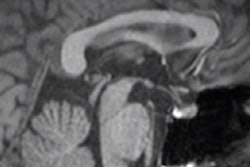After being confined in research settings for quite some time, CAD software is increasingly entering the clinical arena, said Dr. Michel Bilello, PhD, of the University of Pennsylvania. Bilello's latest CAD project follows on the prior development of a similar CAD system designed to detect changes in white-matter lesion load in patients with multiple sclerosis.
"That program has been very successful, helping neuroradiologists in my institution with their daily interpretation of follow-up brain MRIs in that patient population over the past five years or so," he said. "It was only natural to extend this idea to other disease processes, and brain metastatic disease is one of them."
Bilello noted that there is particular interest in such a CAD system from neurosurgeons who perform Gamma Knife radiosurgery, as brain images with color-coded regions of new or decreased enhancement can offer them a quick overview of disease progression or regression.
"By helping neuroradiologists with greater reproducibility and higher accuracy in detecting and quantifying changes in brain metastatic disease, such a CAD system has the potential to ultimately help patients," Bilello told AuntMinnie.com. "This work is an example of many computer algorithms which are becoming increasingly and ineluctably part of clinical radiology."
Get more details on the software by sitting in on this Wednesday talk.



















